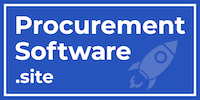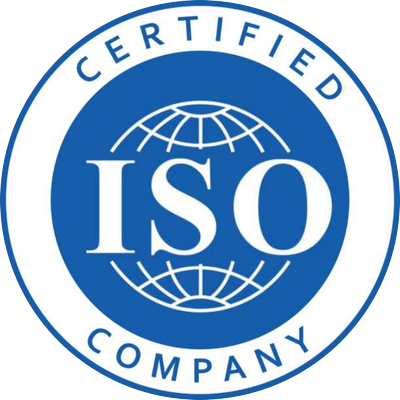Tech companies are rapidly developing AI tools that can autonomously handle complex tasks, with one of the most transformative applications being in SaaS (Software as a Service) procurement. While AI advancements have mostly focused on generating content and improving customer service, the next big leap is in AI that can make decisions and execute tasks independently. This includes critical business functions like selecting software, negotiating contracts, and managing subscriptions—key components for optimizing business operations.
How AI is Changing SaaS Purchasing
AI-driven bots are changing the way businesses approach SaaS purchasing. Unlike humans, AI is immune to marketing tactics, sales pressures, and superficial product features. Instead, these bots make decisions based purely on data, analyzing and filtering out irrelevant information to focus on the true value of a product or service. For instance, according to a report by McKinsey, companies that have integrated AI into their procurement processes have seen a 5-10% reduction in procurement costs and a 10-15% improvement in procurement efficiency .
This data-driven approach allows AI to optimize SaaS purchasing decisions with a speed and accuracy that surpasses human capabilities, leading to significant cost savings and operational efficiencies.
The Rise of Autonomous SaaS Buying
Autonomous SaaS purchasing is no longer a concept for the distant future—it’s already beginning to take shape. Current applications include automated systems that manage routine tasks like subscription renewals and usage tracking. However, the future of autonomous SaaS buying lies in AI agents that can manage the entire procurement process. These AI systems will evaluate different vendors, negotiate contracts, and handle renewals independently. Gartner predicts that by 2025, 30% of large enterprises will be using AI-driven bots for at least one form of procurement .
These AI agents analyze vast amounts of data to ensure businesses select the best software solutions based on performance, cost-effectiveness, and alignment with their strategic goals.
Insights from Analysts – Gartner’s Vision: A Future Dominated by Autonomous Buying Bots
Gartner analysts Don Scheibenreif and Mark Raskino have identified autonomous buying as a major driver of business efficiency in the coming years. They predict that by 2030, up to 20% of business revenue could be influenced or directly generated by AI-driven purchasing bots, which they refer to as “custobots.” These bots will autonomously manage procurement tasks, interact with SaaS vendors, and ensure adherence to corporate purchasing policies. As a result, businesses are beginning to rethink their strategies—not just to fend off malicious bots but also to embrace these autonomous agents as valuable assets in their procurement processes.
The Evolution of Autonomous SaaS Buying
Scheibenreif and Raskino outline the development of autonomous SaaS buying in three key stages:
- Announcer Stage: In this phase, technology provides users with essential information to inform purchasing decisions, such as alerts about upcoming subscription renewals or necessary software updates. This stage helps users manage their software needs more proactively.
- Bound Stage: AI systems advance to making decisions within predefined boundaries. For example, an AI might automatically renew a SaaS subscription based on set criteria like ongoing usage or performance metrics. According to a study by PwC, 45% of companies have already implemented AI to handle such routine procurement tasks, reflecting the growing trust in AI’s capabilities .
- Adaptable Stage: The final stage is where AI agents become highly adaptable, evaluating multiple SaaS options and making decisions based on comprehensive analyses of factors such as price, features, and vendor reputation. At this point, AI not only mimics human decision-making but also surpasses it in efficiency and accuracy.
In this fully mature system, AI agents can manage the entire SaaS procurement process with a level of precision and speed that outperforms human capabilities.
What This Means for Procurement Jobs
The rise of autonomous SaaS buying raises important questions about the future of procurement roles. While there are concerns about job displacement, AI is more likely to complement human efforts by taking over repetitive, time-consuming tasks. This shift will allow procurement professionals to focus on higher-level strategic decisions and relationship management. According to Deloitte, 73% of procurement leaders believe that AI will significantly impact their roles, with many seeing it as an opportunity to enhance strategic influence and drive business value .
Moreover, as AI-driven systems become more prevalent, new roles and opportunities will emerge for professionals skilled in managing and optimizing these advanced technologies.
The Future of SaaS Procurement
The shift toward autonomous SaaS buying is not just a possibility—it’s already happening. As businesses continue to integrate AI into their procurement processes, they will experience significant improvements in efficiency, cost savings, and decision-making accuracy. Additionally, AI’s ability to assess the ethical and environmental impact of software providers will enable companies to make more socially responsible purchasing decisions, aligning with broader corporate values and sustainability goals.
Conclusion
Autonomous SaaS buying represents a fundamental shift in how businesses approach software procurement. By embracing AI-driven purchasing, companies can streamline their operations, reduce costs, and ensure they are using the best tools available. As AI technology continues to advance, autonomous SaaS buying will become an integral part of business strategy, driving growth, innovation, and competitiveness in the software industry. Businesses that adapt to this trend will be better positioned to thrive in an increasingly automated and data-driven world.











